Video Demos
each feature.
Explore our user-friendly but robust facility maintenance software. See how Maintenance Care can make your workday easier with real-life, facility manager-approved features.
Maintenance Care specializes in providing an easy to use Computerized Maintenance Management Software (CMMS) for a wide range of industries.
Lorem ipsum dolor sit amet, consectetur adipiscing elit, sed do eiusmod tempor incididunt ut labore et dolore magna aliqua. Ut enim ad minim veniam, quis nostrud exercitation ullamco laboris nis.
Computerized Maintenance Management Systems (CMMS) are increasingly being used by businesses to streamline their maintenance processes, resulting in cost savings and improved efficiency. CMMS software provides a comprehensive solution that enhances enterprise asset management and supports predictive maintenance strategies.
Maintenance teams that adopt a CMMS can improve their operational performance while eliminating manual errors and reducing costs associated with preventative maintenance activities..png?width=724&height=483&name=top%20cmms%20programs%20in%20use%20(1).png)
The implementation of a reliable system is essential for any organization looking to achieve greater levels of productivity through enhanced asset availability, reduced downtime and better control over inventory levels.
The system has been designed to provide an extensive suite of features that enable users to schedule work orders, track employee hours, manage spare parts inventories, analyze data trends and generate reports.
With these capabilities at hand, companies can easily identify potential issues before they arise and proactively plan corrective action measures.
A modern CMMS platform like Maintenance Care can be beneficial for any business looking to optimize its facilities' maintenance management operations and ensure long-term success.
A computerized maintenance management system (CMMS) is becoming increasingly important for maximizing asset reliability and safety while also ensuring that productivity gains are achieved. This type of CMMS software allows organizations to streamline their operations while improving the cost savings associated with inventory control.
The primary benefit of using this type of CMMS lies in its ability to help ensure all necessary tasks related to equipment upkeep are completed on time and according to established safety procedures.
A comprehensive, customizable computerized maintenance management system (CMMS) is a powerful tool that can help organizations manage and streamline their maintenance work. By automating many of the processes involved in maintenance management, a CMMS can help organizations reduce costs, increase efficiency and extend the asset lifecycle.

Maintenance software helps organizations manage work related to maintaining their facilities and equipment. This can include anything from simple spreadsheets to complex enterprise-level systems. At its core, maintenance software is designed to help organizations automate and streamline their maintenance processes, which can help reduce costs, increase efficiency and improve asset reliability.
When it comes to choosing a CMMS, there are several features and functionalities that organizations should look for. These include workflow visibility and work order management, asset reliability improvements, health and safety procedures improvements, inventory control and deep insights into all aspects of maintenance work.
One of the most important features of a CMMS is workflow visibility and work order management. This allows organizations to track maintenance work progress in real-time, which can ensure that work is completed on time and within budget. Work order management can help organizations prioritize maintenance tasks based on their level of importance and urgency.
Another key benefit of using a CMMS is the ability to improve asset reliability. By tracking maintenance history and identifying potential issues before they become major problems, organizations can improve assets’ reliability and reduce downtime. A good CMMS will provide organizations deep insights into asset performance to make data-driven decisions about maintenance and repairs.

A CMMS can also help organizations improve their health and safety procedures. By automating many of the processes involved in maintenance management, a CMMS can help ensure tasks are performed safely and in compliance with relevant regulations. This can help reduce the risk of accidents and injury, which can have a significant impact on the bottom line.
There are many benefits to using computerized maintenance management software (CMMS). These include overall maintenance cost reductions, decreased downtime occurrence and length, big productivity gains through CMMS systems, better inventory control and deep insight into all aspects of maintenance work.
Additionally, a good CMMS will provide organizations with end-to-end solutions for maintenance processes, including work order management, enterprise asset management, spare parts inventory management, vendor management and maintenance reports.
One of the primary benefits of using a CMMS is overall maintenance cost reduction. By automating many of the processes involved in maintenance management, organizations can reduce labor costs and improve efficiency. By identifying potential issues before they become major problems, organizations can reduce the cost of repairs and extend the life of their assets.
Another key benefit of using a CMMS is decreased asset downtime occurrence and length. By tracking maintenance history and identifying potential issues before they become major problems, organizations can reduce downtime and improve asset reliability. This can have a significant impact on the bottom line, as downtime can be a major expense for many.
CMMS can help organizations achieve big productivity gains by streamlining maintenance task assignments, improving workflow visibility and automating key maintenance management processes. Implementing a computerized maintenance management system (CMMS) can result in up to a 40 percent increase in productivity within a three-month period.
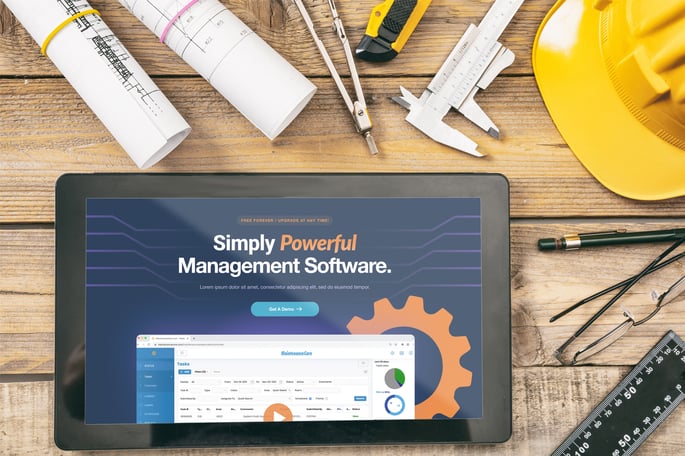
A CMMS provides an integrated platform for all aspects of plant or facility maintenance processes. It allows users to easily access critical data such as work orders, preventive maintenance schedules, inventory tracking and more—all in one place.
CMMS can help organizations achieve better inventory control by tracking spare parts inventory levels, identifying obsolete parts and ensuring that the right parts are available when needed.
CMMS provides deep insight into all aspects of maintenance work, including equipment usage, maintenance history and maintenance costs. This insight can help organizations make data-driven decisions about their facilities and optimize maintenance processes.
Some of these benefits include improved asset reliability, better inventory control, increased visibility and transparency of maintenance work, reduced equipment downtime and automation of key maintenance management processes.
A CMMS also enables maintenance teams to track and analyze maintenance history and activities, generate reports and access all information on their mobile devices.

One of the most-used features of Maintenance Care’s CMMS is the ability to digitally submit, track, assign and manage work orders. A CMMS with work order management can help maintenance teams streamline communication and collaboration across departments. Work orders can be easily shared with relevant personnel, such as maintenance technicians, supervisors and managers, and notifications are sent automatically when work orders are created, updated or completed.
Asset management is a critical feature of a computerized maintenance management system (CMMS) that enables maintenance teams to efficiently manage and maintain their physical assets. In a CMMS, assets can include anything from production equipment, vehicles and facilities to tools, machinery and HVAC units.
Asset management involves creating and maintaining a centralized asset database that contains detailed information about each asset, such as its location, serial number, maintenance history, warranty information and associated documentation.
How can businesses effectively manage their spare parts inventory? Spare part inventory management is an essential component of a CMMS. Utilizing a CMMS system to track the availability, cost and location of spare parts helps organizations ensure that they never run out of supplies and remain within budget.
By implementing effective vendor management practices within your CMMS system you can help ensure that operations are running efficiently by reducing unnecessary downtime caused by inadequate supplies or late deliveries from suppliers. Developing collaborative working relationships between your facilities and vendors can operational efficiency and reduce cost overhead.
Clear, customizable reporting dashboards in your CMMS give you the power to make better-informed decisions about maintenance needs and preventative actions. The data collected in these reports allow facilities managers to forecast potential issues and take corrective action before those issues become major problems.
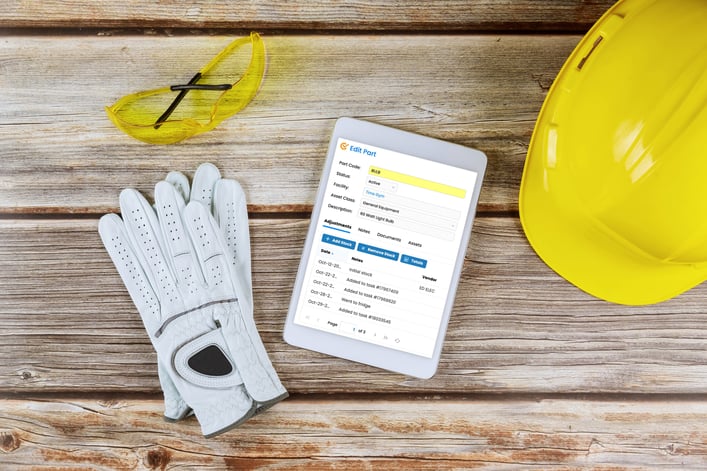
CMMS, or Computerized Maintenance Management System, is a cloud-based solution for managing equipment maintenance. It provides an efficient and reliable way to reduce downtime by quickly identifying problems and providing solutions that improve productivity. Some key benefits of a secure, cloud-based CMMS include:
By leveraging the power of cloud computing technologies such as CMMS, organizations can decrease operational costs while increasing efficiency and reducing downtime due to unexpected outages or malfunctions.
Sensor integration is one feature of Maintenance Care’s CMMS that helps prevent potential disasters and keep building areas at a comfortable temperature.
With the use of small, wireless sensors that operate on a frequency-based system, you can easily obtain readings for various parts of your facility. The setup process is simple and straightforward, and you have the option to select from a variety of sensor types, such as surface, submersible and environmental temperature monitoring sensors, as well as ambient room humidity sensors.
Adopting a CMMS boosts return on investment (ROI) in several ways. One is reducing the need to hire additional staff members, and another is by having better insights so you can avoid paying for costly repairs. Unplanned downtime leads to less productivity and lost dollars.
Some additional benefits of using a CMMS to budget and lower costs include:

With an effective CMMS, managers have the capability to manage their maintenance scheduling, hold team members accountable for completing assigned tasks, track the history of all assets, schedule preventive maintenance and access documents, manuals, invoices and schedules with ease. CMMS solutions provide access to real-time data which allows users to make informed decisions quickly.
Equipment downtime is a major problem for businesses, as it can lead to costly repairs and lost productivity. Fortunately, there are ways to reduce the amount of equipment downtime. A CMMS with equipment tracking and preventive scheduling features can help companies proactively monitor their assets and anticipate potential failures, allowing them to take steps to prevent downtime before it occurs.
Establish a culture of continuous improvement by analyzing your assets’ historical performance against current trends in order to make necessary adjustments. Know what you have, what you need to order and when you can expect to upgrade or replace assets using robust tracking and reporting tools in your CMMS.
Automation is a process that reduces the amount of manual input needed to complete tasks related to managing maintenance operations. It enables managers to easily schedule, track and optimize workflows throughout their organization by streamlining complex processes. Automation can help create a more efficient workflow for both technicians and managers.
For example, automated scheduling allows organizations to prioritize jobs according to criteria such as urgency or importance, making sure important jobs are completed first. This helps ensure all essential equipment receives necessary repairs in a timely manner without wasting precious labor hours on low-priority tasks.

An efficient maintenance team can be the difference between success and failure. To increase productivity, companies must utilize CMMS software to streamline operations and maximize performance. Here are four ways a CMMS software can help:
By leveraging these features within a CMMS solution, businesses can ensure their maintenance teams are running at peak efficiency – setting themselves up for success now and into the future.

Using CMMS analytics, facilities managers, C-suite leaders and other pertinent decision-makers can access the data needed to make informed decisions that will lead to more efficient operations. By leveraging this data, organizations can track key performance indicators such as cost savings, productivity gains, safety metrics and much more. This data helps managers identify problems quickly, set benchmarks and measure progress against goals.
Your CMMS should allow for customizing reports to fit your exact needs. With detailed metrics on assets, such as cost per repair or average time between repairs, you gain valuable insights into better scheduling and facilities planning. Being able to extract meaningful information from your reports allows you to optimize operations and keep up with changing demands from customers and stakeholders alike.
Maintenance teams rely on asset reports to assess the productivity and efficacy of their operations. Asset uptime and downtime reports offer detailed data on the performance of assets over a given period, including metrics like average run times and total hours offline or powered down.
By understanding facility needs from both operational and financial perspectives, maintenance teams can create a plan that will enable them to reach their goals in the most efficient way possible. Using strategic planning allows organizations to optimize assets through predictive maintenance activities while simultaneously reducing costs associated with downtime.

Planned Preventive Maintenance (PPM) involves creating and following an organized maintenance schedule that allows organizations to properly plan, manage and execute maintenance tasks on their equipment.
While unforeseen issues are inevitable in any facility, PPM ensures that operations remain as uninterrupted as possible by identifying potential problems before they become serious issues. Scheduling preventive tasks ahead of time increases the lifespan of assets as well as employee safety while reducing operational costs.
Detailed work orders allow users to have visibility into each job's progress as it moves through its stages in the automated ordering process. This makes organizing and managing complex maintenance processes easier for everyone involved, from the requestor to the maintenance technician and up to team supervisors.
An end-to-end solution is the key to managing maintenance processes effectively. It provides a comprehensive range of services that automate and streamline important tasks, such as managing work orders, tracking progress and providing feedback. The all-in-one approach helps organizations monitor maintenance work in real-time, ensuring better decision-making for proactive activities.
Integrating a CMMS into existing programs and workflows is ideal to streamline all of your business tools and technologies. This comprehensive approach ensures that all requirements are met, as well as provides an efficient way for teams to stay on top of their work. Furthermore, such an integrated platform helps reduce costs associated with manual labor and unplanned downtime due to unexpected breakdowns or malfunctions.
To use a CMMS to perform asset maintenance, you can start by creating a work order in the system, which includes information about the asset to be maintained, the type of maintenance required and any other relevant details. You can then assign the work order to a technician, who can use the CMMS to access information about the asset, such as its maintenance history and any previous issues that have been reported.
The technician can then perform the required maintenance, recording details such as the work performed, any parts used and the amount of time spent on the job. Once the work is complete, the technician can close out the work order in the CMMS, which triggers the system to update the asset's maintenance history and generate any necessary reports.
By utilizing a CMMS for asset maintenance, you can streamline the entire maintenance process, from work order creation to completion.
By analyzing maintenance task information, such as completed work orders and scheduled repairs on a particular asset, one can assess trends in a system-wide view or focused on specific assets or locations. This allows for informed decisions that can be used to improve operations and performance objectives.
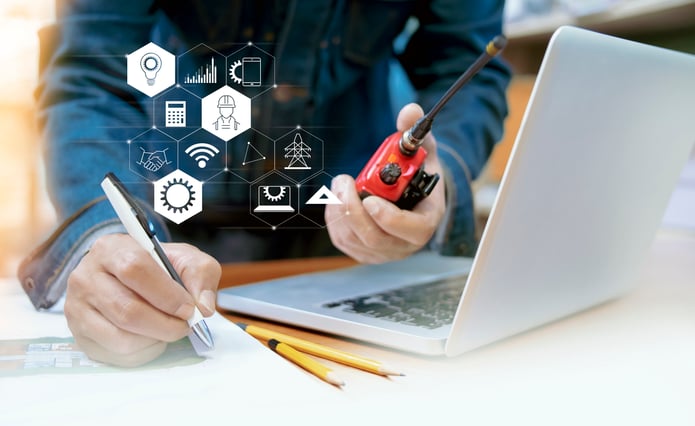
The use of a CMMS system not only makes it easier to keep track of an organization's inventory but also increases efficiency by streamlining processes across the board. Asset tracking is essential to efficient asset management and automating its process can save time and money.
A mobile app has become a necessary tool for on-the-go maintenance teams as they work out in the field. Gone are the days when cumbersome paperwork was required in order to track assets and maintain up-to-date records; replaced instead by a modernized CMMS software that can be accessed on any mobile device at any time. With this technology, organizations can engage their maintenance procedures with greater efficiency than ever before.
A comprehensive CMMS software like Maintenance Care offers more than just tracking of each maintenance request, asset data, asset lifecycle and work orders. Integrations with systems like CareClean will streamline housekeeping tasks with key features like cleaning schedules and a mobile app for room technicians.
You can also keep track of all visitors in multiple locations with OneAccess. Fully integrated into your CMMS, GetSensored helps users keep a closer eye on their facility's health with the use of wireless sensors. There are many related programs that help every maintenance manager keep their facilities operating at top performance.
As a maintenance manager, it is essential to smoothly operate and streamline your tasks and teams To achieve this, implementing a comprehensive CMMS software can simplify ongoing maintenance and helps maintenance teams manage all incoming work orders while improving communication.
A successful CMMS (Computerized Maintenance Management System) requires a well-organized and efficient setup. For maintenance team managers, this means having an understanding of the organization’s requirements and working with a supportive implementation team to get the CMMS software set up and running with ease.
The use of a mobile CMMS has transformed how technicians interact with assets and equipment, streamlining workflow and making it easier for managers to track progress remotely. Maintenance techs have seen an increase in productivity due to the ability to respond faster and more accurately when they perform maintenance tasks.
Facilities managers use CMMS systems to automatically collect and analyze data. This helps them track assets, review maintenance tasks and run reports. With this information, they can make informed decisions about how to optimize their organizational operations.

Look for easy-to-use CMMS software with features that meet your specific needs. Find a cloud based system offering asset tracking capabilities, PM scheduling, maintenance data reporting tools, inventory management, real-time alerts and notifications, as well as access controls and unlimited users.
Successful CMMS implementation is the first step to making the most of your software and maintenance programs.
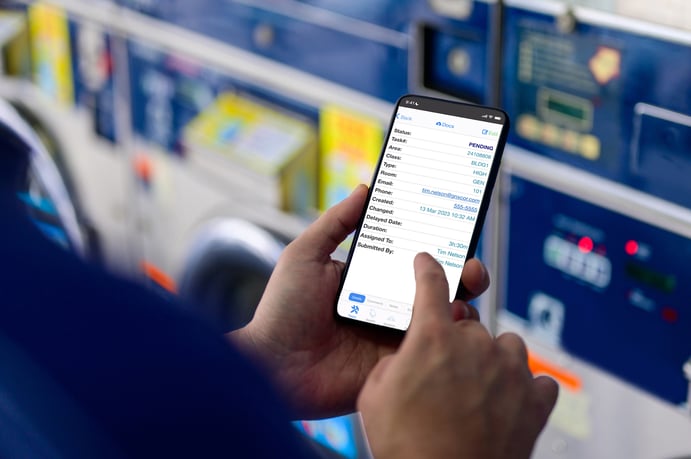
A CMMS is comprehensive, offering features that allow users to manage assets, schedule maintenance tasks now and in the future, maintain regulatory compliance through inspection preparation and much, much more.
A CMMS is used specifically for the maintenance of fleet facilities.
Computerized maintenance management system (or software).
A CMMS software helps facility maintenance teams track work orders, manage assets, schedule preventive tasks and much more using a digital system.
Each CMMS solution will vary by cost. Maintenance Care offers a free digital work order option, as well as upgraded plans with more robust features. Most software plans will offer a monthly subscription fee.
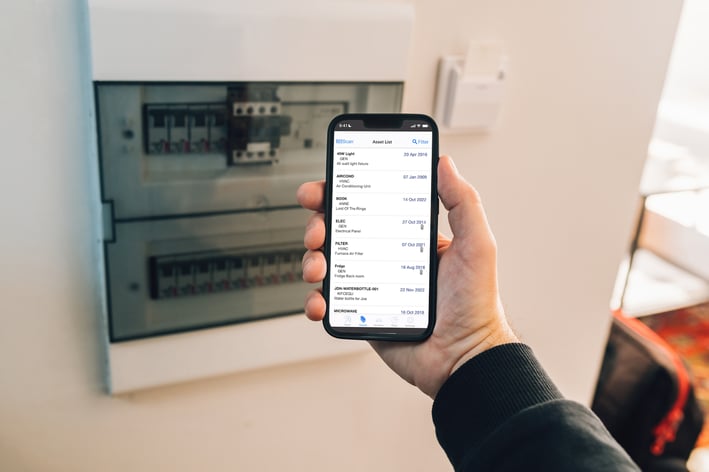
The best CMMS depends on your maintenance operation and the needs of your team.
A CMMS is used to help organizations manage maintenance operations more efficiently. It aids in asset tracking, preventive maintenance scheduling and optimization, cost savings through inventory control and other aspects of maintenance planning.
Analyzing your asset health and finding the best CMMS software for your budget are two ways this technology can help you reduce operating costs related to facility maintenance.
From the ground up, we wanted to build a product and a company that's connected to its customers, always improving and eager to try out new ways of doing maintenance. All our team members share one goal: making the user’s professional life easier to manage and turning facility management from a mundane task into something fun, efficient and practical.

Maintenance Care offers a simple, hands-on training process and ongoing support for all customers so they and their teams can become experts with the best CMMS software features available.
With the advances in technology, it's now possible to connect a CMMS system with other software applications and systems like Amazon Alexa. Maintenance Care offers integrations with more than 5,000 different tools to allow your CMMS software to work best for you and your organization's needs.

Stay up-to-date with tips and tricks, industry news, ongoing support and expert resources from the Maintenance Care software team.
Experience the power of Maintenance Care first-hand by getting a demo or trying our FREE forever software.
Maintenance Care's computerized maintenance management system is powerful, user-friendly, and highly efficient. It allows you to access all your maintenance work easily from wherever you are and at any time.
With our full-featured, comprehensive CMMS maintenance program, you and your team can easily manage work orders, preventive maintenance scheduling and asset tracking in your facility from your desktop or mobile device.
© 2024 Maintenance Care | ALL RIGHTS RESERVED